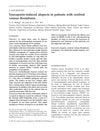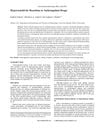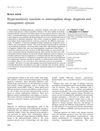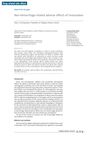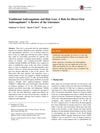Drugs Affecting Blood Coagulation, Fibrinolysis, and Hemostasis
January 2009
in “
Side effects of drugs annual
”
warfarin heparin enoxaparin ximelagatran fondaparinux direct factor IXa inhibitors direct factor Xa inhibitors thrombolytic agents platelet function aspirin dipyridamole clopidogrel antiphospholipid antibodies thyroid disease CYP2C9*11 allele INR intracerebral hemorrhage alanine transaminase liver disease heart failure Coumadin Lovenox Exanta Arixtra Plavix
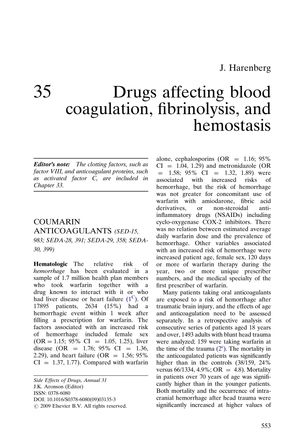
TLDR Some blood-thinning medications can increase the risk of bleeding, and certain factors like genetics and other health conditions affect their safety and effectiveness.
In 2009, a study involving 1.7 million health plan members found that 15% of the 17,895 patients on warfarin experienced a hemorrhagic event within a week of filling a prescription. Risk factors for hemorrhage included female sex, liver disease, heart failure, and certain drug interactions. A retrospective analysis of 1,493 adults with blunt head trauma showed that those on warfarin had a significantly higher mortality rate, particularly with INRs over 4.0. Warfarin-induced skin necrosis was a concern, especially in obese women, and genetic factors like the CYP2C9*11 allele were linked to increased sensitivity to anticoagulants. Older patients with atrial fibrillation had a higher risk of hemorrhage, regardless of warfarin use. Other factors affecting warfarin safety and efficacy included antiphospholipid antibodies, thyroid disease, and various drug interactions. Heparin was noted to release lipoprotein lipase, potentially causing cardiac dysrhythmias, while enoxaparin did not lead to more major hemorrhagic complications than expected. Management of warfarin adverse reactions, such as intracerebral hemorrhage, required careful monitoring and therapy adjustment.
Ximelagatran, an oral direct thrombin inhibitor, was found to cause elevated alanine transaminase levels in 0.53% of patients, a significantly higher rate than the comparator group, and had a 6.6 times higher relative risk of severe liver damage compared to warfarin/placebo. The FDA concluded that the benefit to harm balance of ximelagatran was unfavorable due to hepatotoxicity concerns. Other drugs like direct factor IXa and Xa inhibitors were in development, and fondaparinux, an indirect factor Xa inhibitor, did not increase bleeding rates in a study with 12,092 patients. Thrombolytic agents and drugs altering platelet function were also reviewed for adverse effects and interactions.
In a randomized trial with 1,363 patients, the combination of aspirin plus dipyridamole showed a hazard ratio of 0.80 for fewer primary outcome events compared to aspirin alone after ischemic stroke, with an absolute risk reduction of 1.0% per year. However, the combination therapy led to more discontinuations due to side effects like headaches. Resistance to thienopyridines and life-threatening bleeding associated with clopidogrel and aspirin use were also reported.
